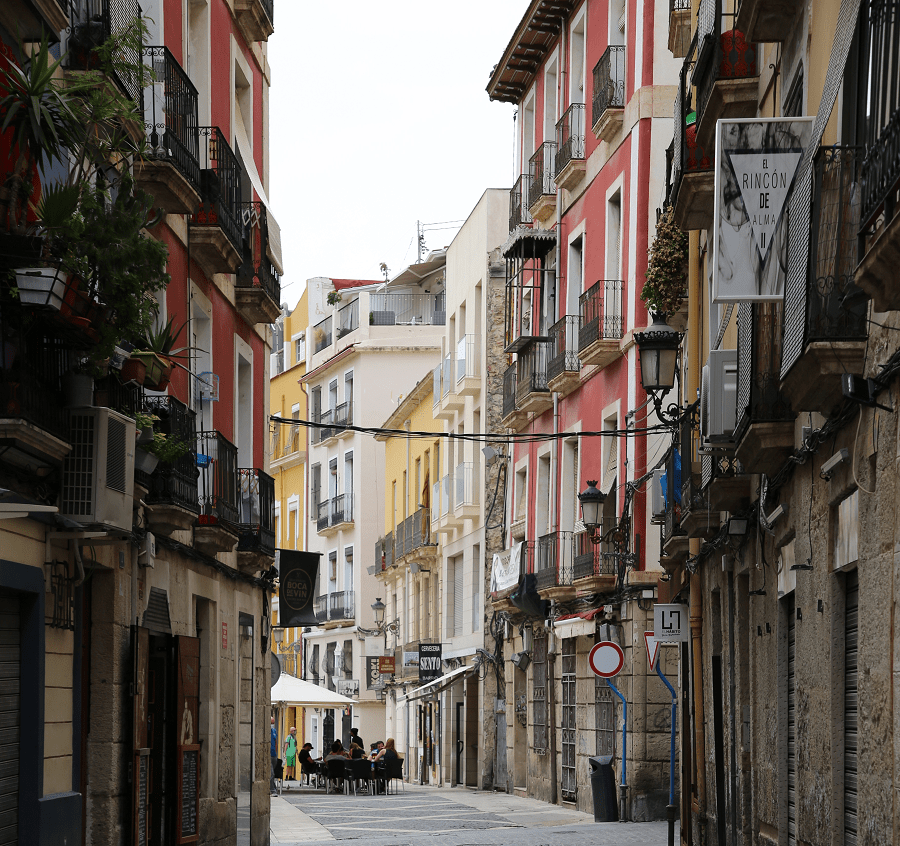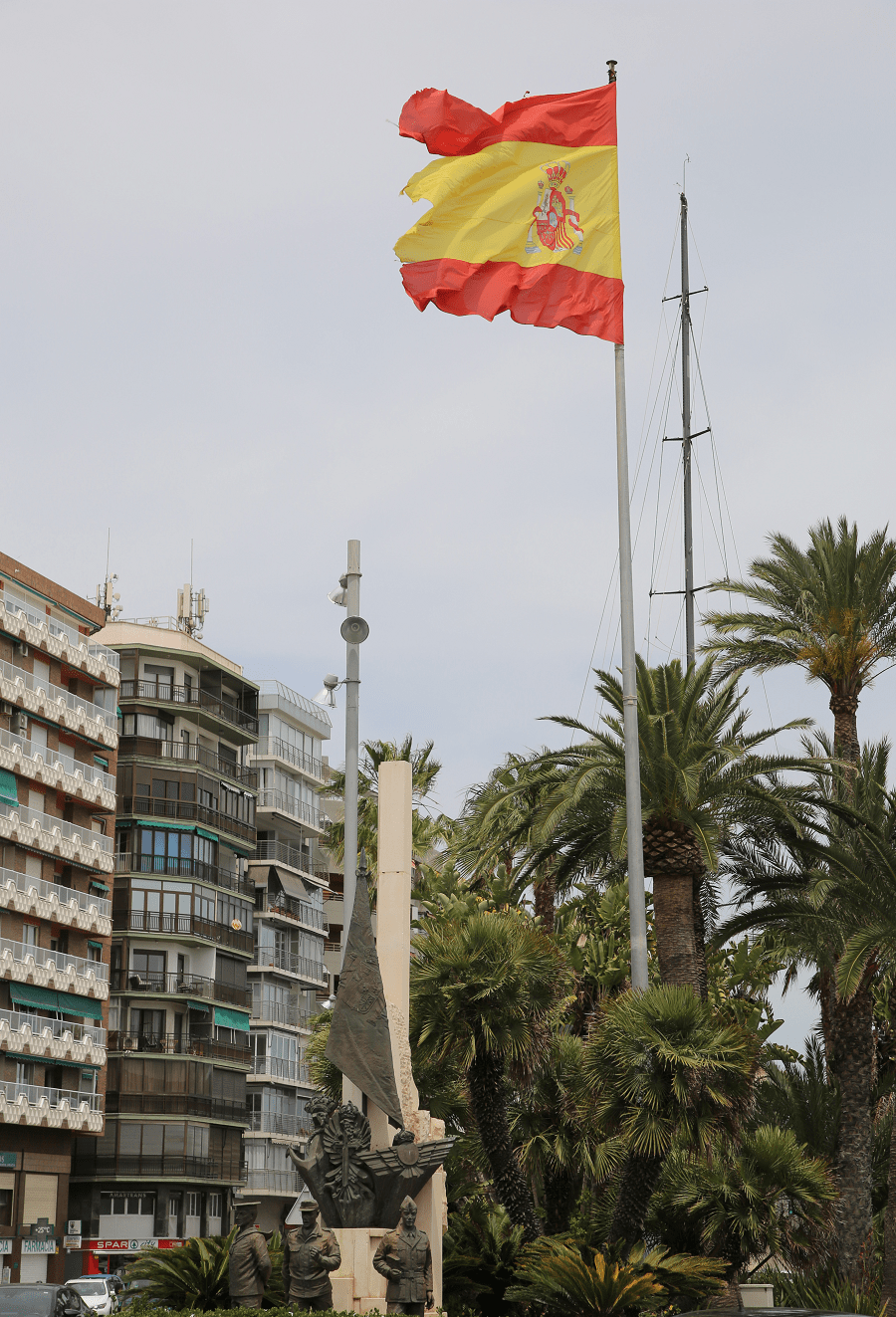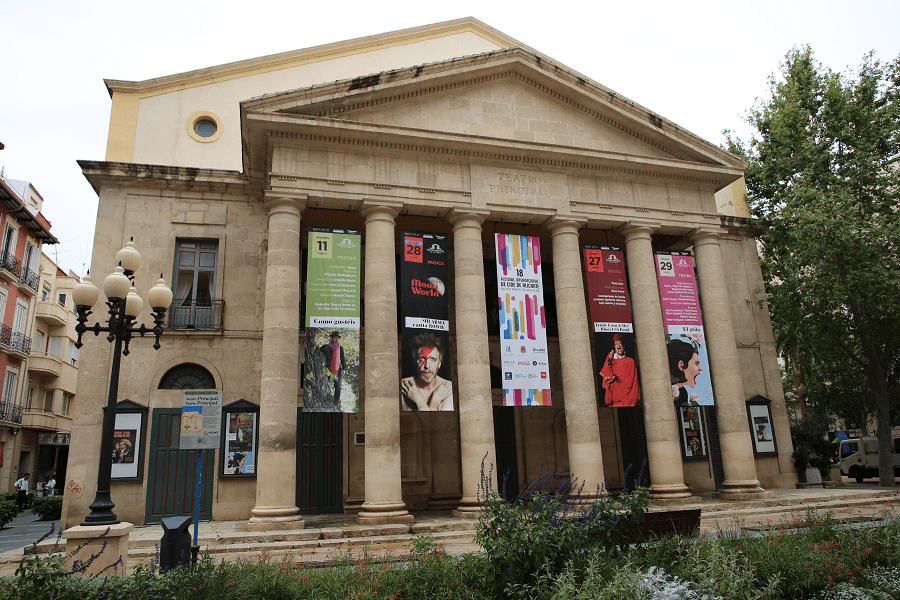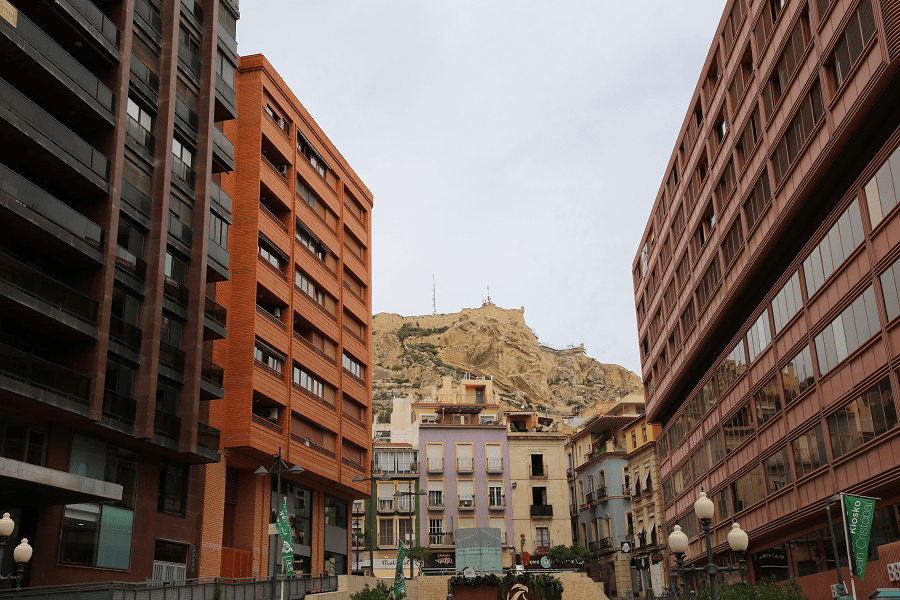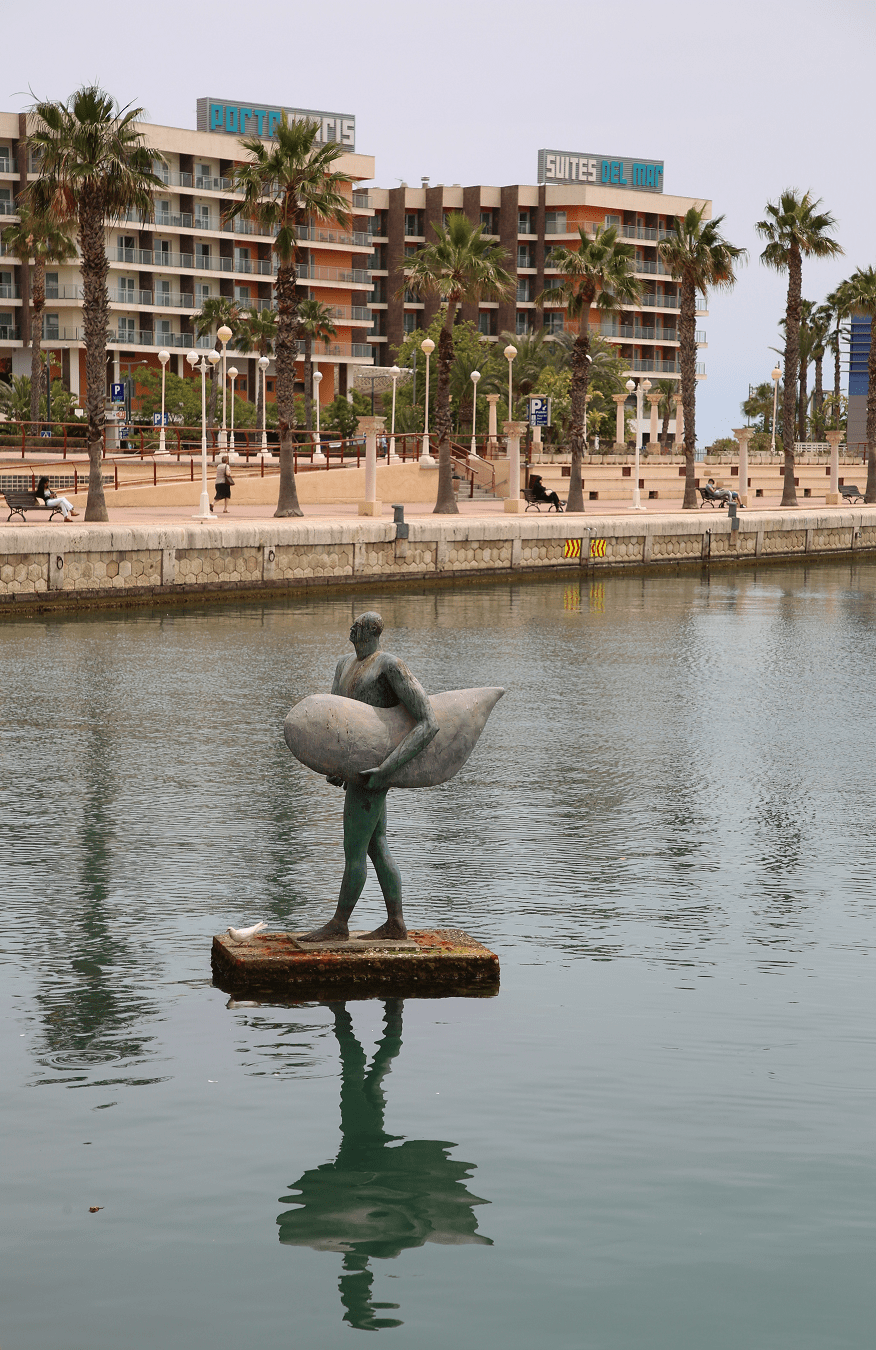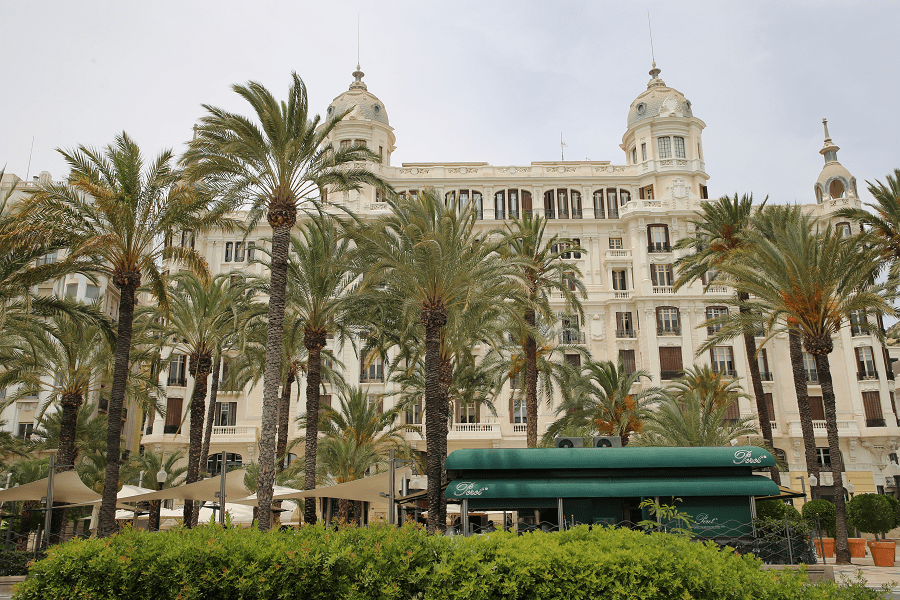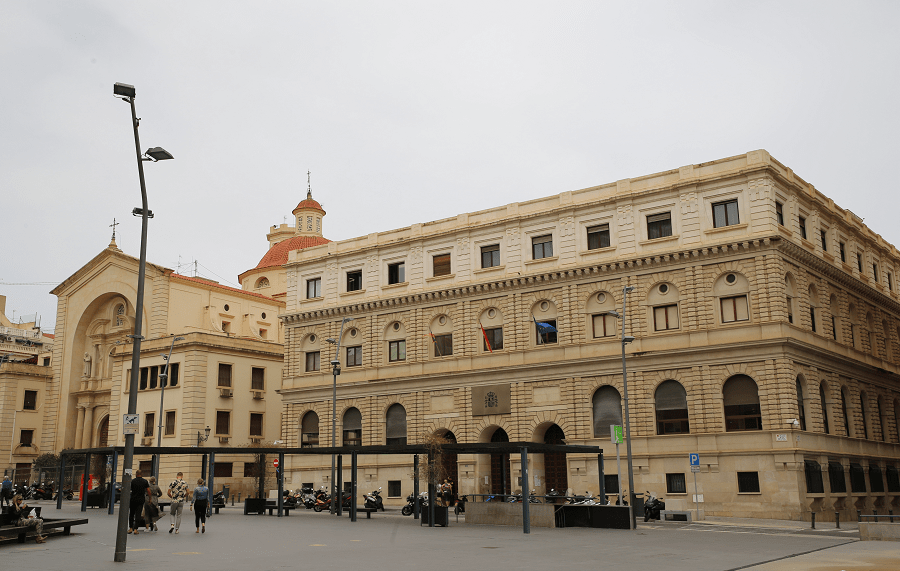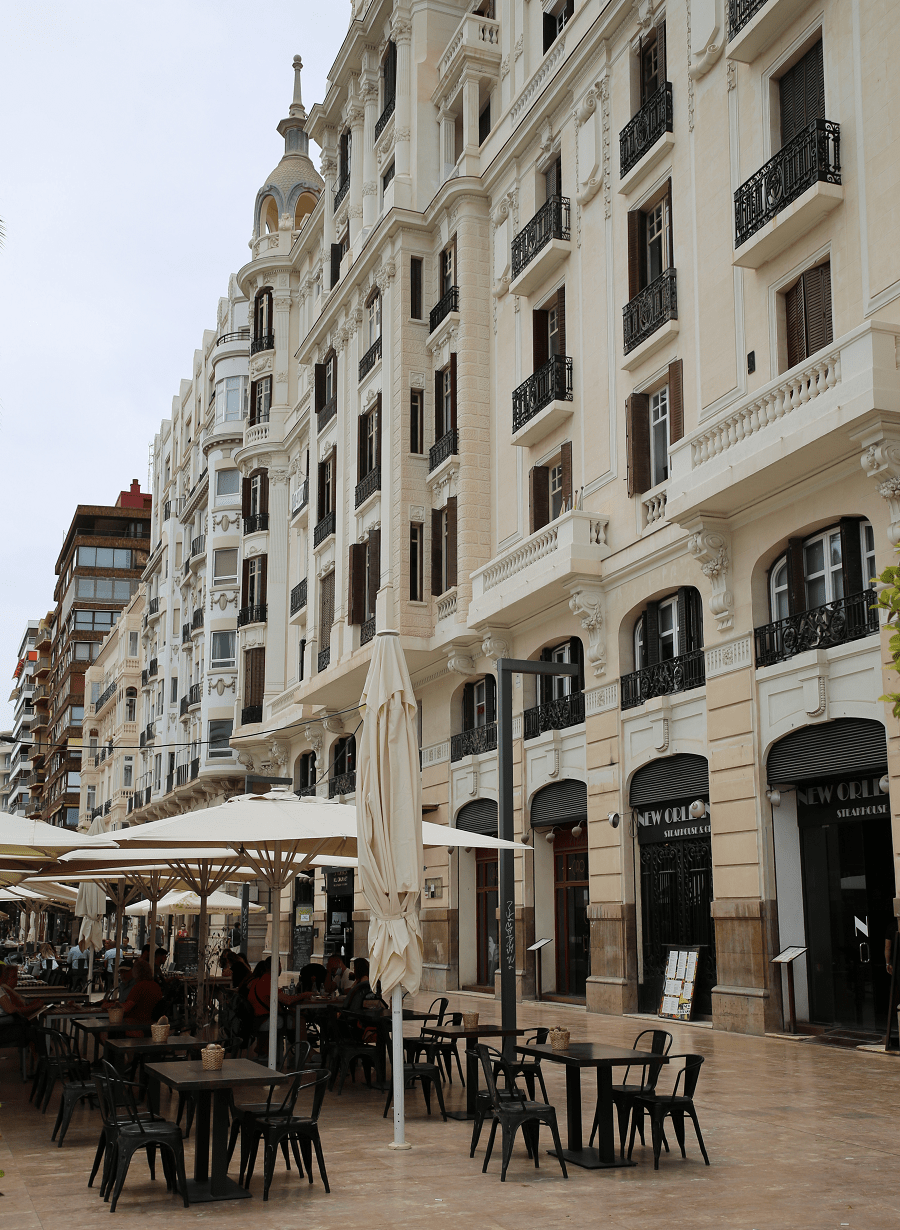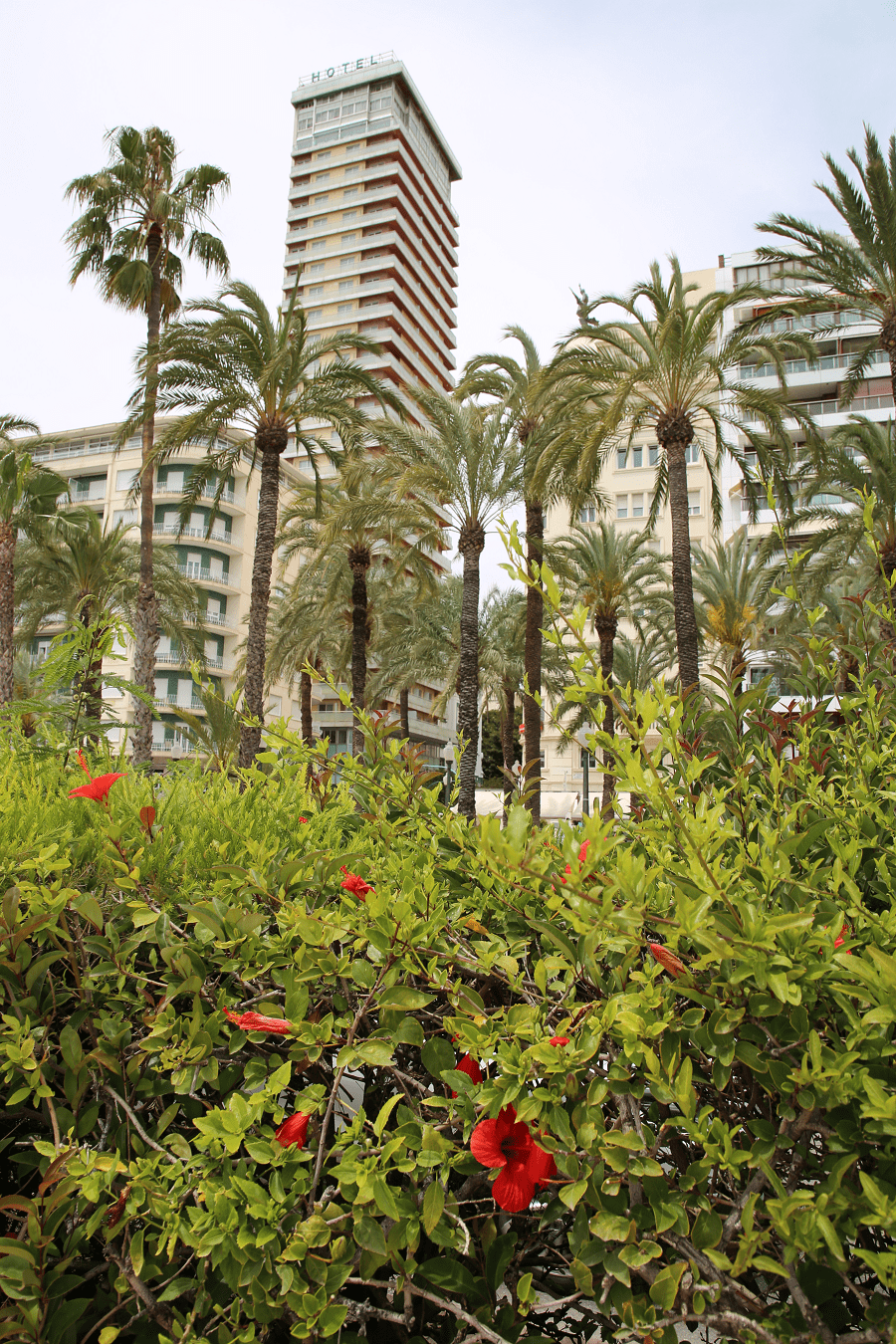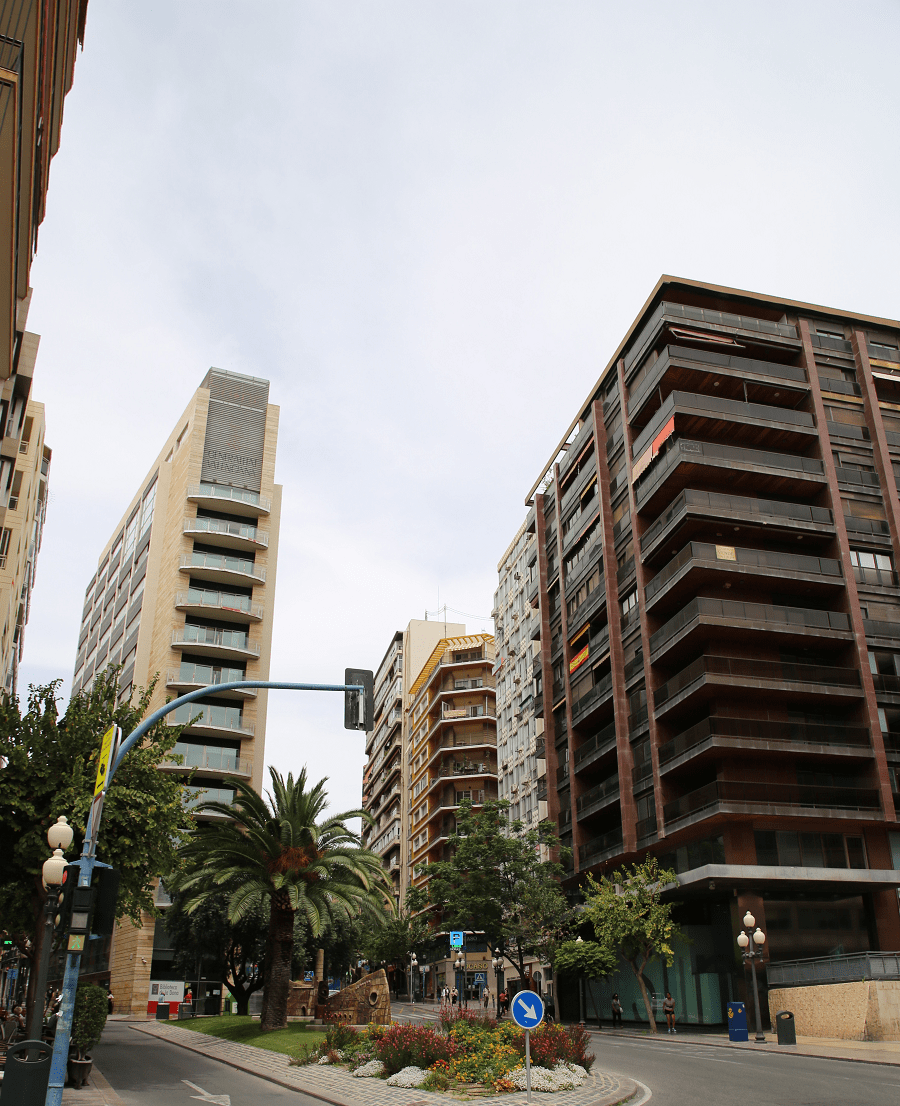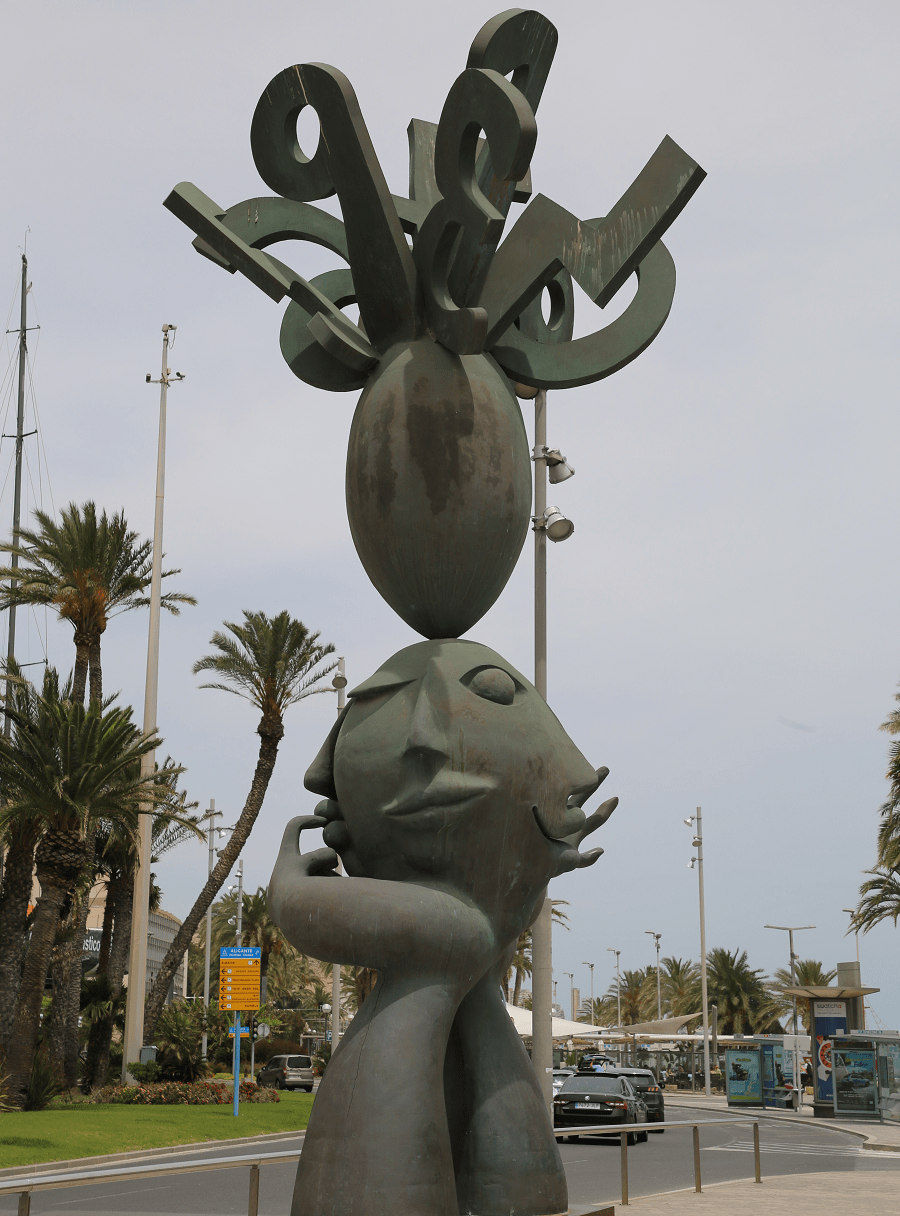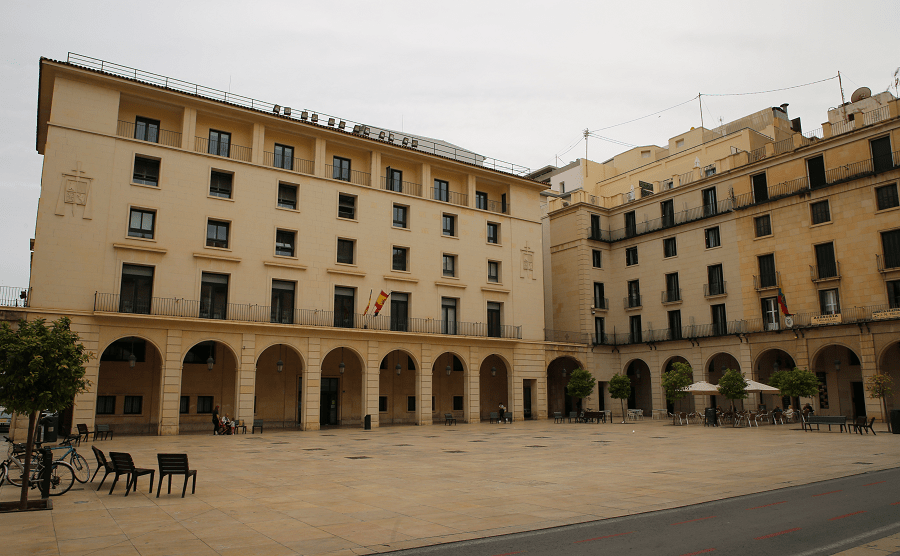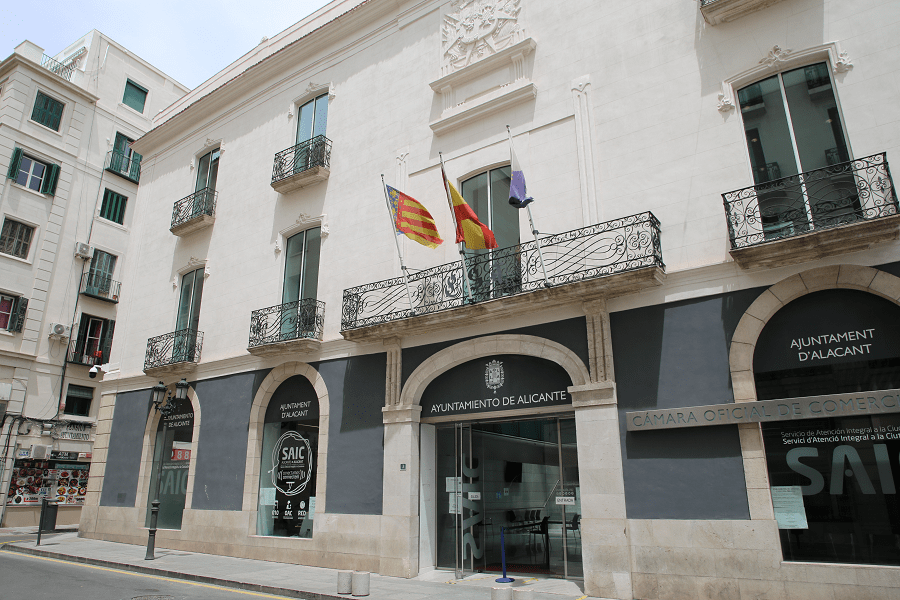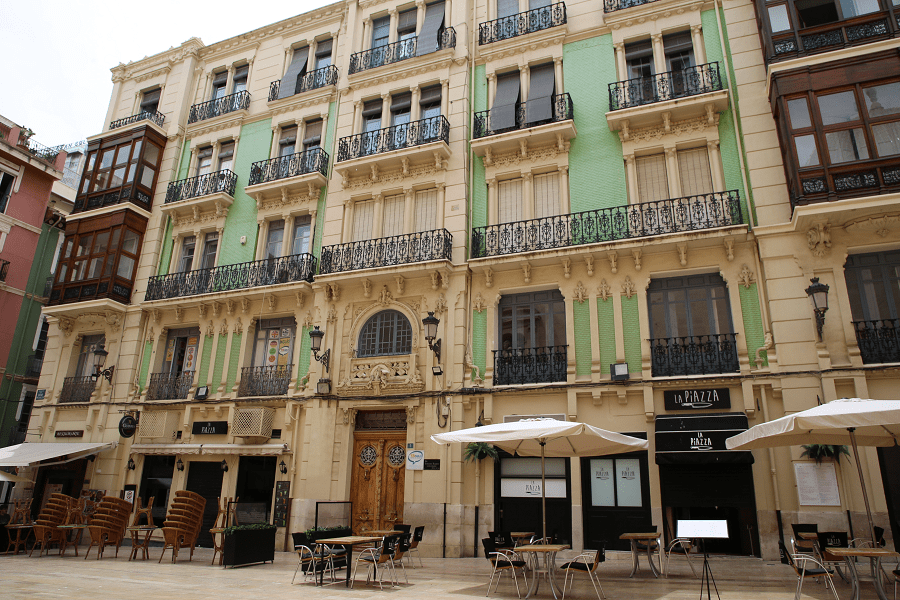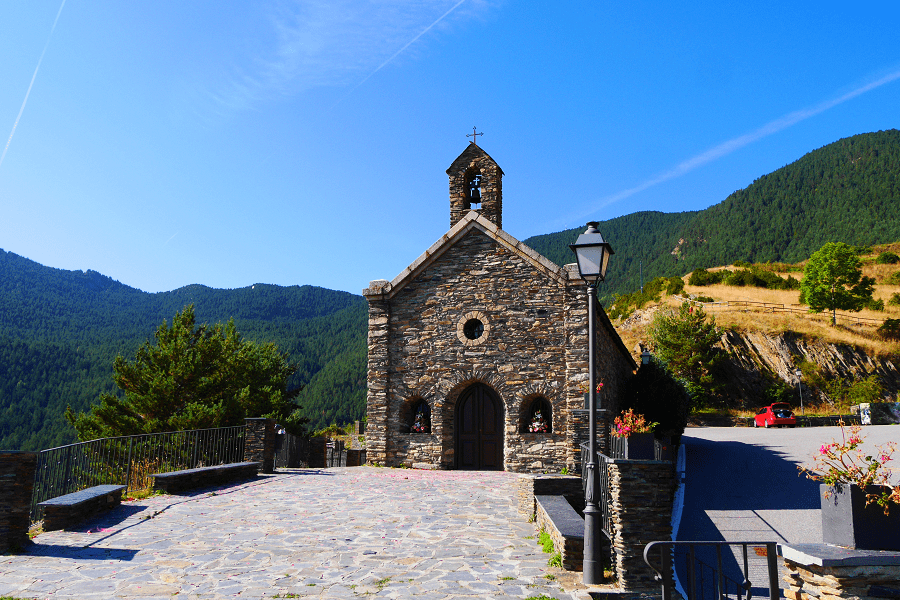Alicante (in Valencian and co-officially Alacant) is a city and a municipality in Spain, capital of the province of the same name, in the Valencian Community. Port city, is located on the Mediterranean coast. It is the second most populated municipality in the autonomous community and the 11th in the country.
It forms an agglomeration with many cities in the Campo de Alicante region: San Vicente del Raspeig, San Juan de Alicante, Muchamiel) and Campello. It is also linked to the metropolis of Alicante – Elche.
It’s an important and popular part of the Costa Blanca of the Mediterranean resorts of Spain
It is the headquarters of organizations such as the European Union Intellectual Property Office (EUIPO), Casa Mediterráneo, the Ministry of Innovation, Universities, Science and Digital Society of the Generalitat Valenciana or the Ombudsman of the Valencian Community.
It has an important Mediterranean port and its airport, located in its surroundings, is the fifth in Spain in number of passengers.
The capital and its metropolitan area are connected through the Alicante Metropolitan TRAM.
The main university institution is the University of Alicante and among its cultural infrastructures the Ciudad de la Luz film studio stands out.
Its most important festivals are the Bonfires of San Juan, which are held from June 19 to 24 and are declared a holiday of International Tourist Interest.
Museums such as the Archaeological Museum of Alicante (MARQ Museo Arqueologico de Alicante), the Museum of Contemporary Art (Museo de Arte Contemporaneo de Alicante (MACA) or The Ocean Race Museum stand out.
Main attractions
Basilica of Santa María (Iglesia de Santa María, 14th-16th centuries). Designed in the Gothic style, it was built at the place of the old Great Mosque. It is the oldest temple in the city. Its main altar, in the Rococo style, and its façade, in the Baroque style, both from the 18th century stand out.
Co-Cathedral of San Nicolás de Bari (15th-17th centuries). Also built on the remains of another mosque, it is considered one of the most significant historical monuments in the city. After the civil war of 1936-39, the cathedral was restored. The façade of the cathedral is the work of Juán de Herrera, the architect who designed the monastery of the famous El Escorial, near Madrid. The cathedral houses a gilded altar surrounded by openwork gratings, as well as altars in the whimsical Churriguera style (Spanish Baroque of the early 18th century).
El Monasterio de Santa Verónica/ de Santa Faz (15th century). Located 5 km north of the town center, it is in the Baroque style. Every year, on the second Thursday after Easter, there is a massive pilgrimage that starts from San Nicolás to this monastery.
Defense Towers of the Huerta de Alicante (15th-17th centuries). Defensive bulwarks built in the Huerta de Alicante to defend themselves from the attacks of the Barbary pirates. At present little more than 20 towers are conserved. Some of them are of great beauty, such as Verónica, Reixes or Bonanza. They have been declared a Site of Cultural Interest with the category of monument.
Alicante Town Hall (18th century). Along Calle Mayor, which was the city’s main shopping street until the 19th century, you can go to Plaza del Ayuntamiento, where the Ayuntamiento (city hall) is located. This building is famous for its remarkable 18th century Baroque façade by the local architect Lorenzo Chápuli.
Canónigas de San Agustín Convent (18th century). The construction began in 1732, its works lasted until the beginning of the 19th century.
Gravina Palace (18th century). Built between 1748 and 1808 as the palace of the Count of Lumiares, it currently houses the Gravina Museum of Fine Arts, dedicated to regional painting and sculpture from the 16th to the early 20th centuries.
Maisonnave Palace-Municipal Archive (18th century). Palatial house located in the old town, on the ground floor remains of a late Roman necropolis have been found.
Palace of the Portalet (18th century). It houses an Interpretation Center of the building itself, the Collection of Romanillos-Harris Spanish Guitars, and the permanent exhibition “Monumental Alicante from Vila Nova to Vila Vella” that runs through the Old Town of Alicante, through seven historic buildings.
Alicante Principal Theater (19th century). Neoclassical style building, it was inaugurated in 1847.
Alicante bullring (19th century). It was built in 1848, being renovated in 1888, when it took on its current appearance.
Central Market of Alicante (20th century) was built between 1911 and 1921 on the old Plaza de Balmes.
Alicante Provincial Council building (20th century). Neoclassical palace, it was opened in 1931 and inaugurated by Niceto Alcalá Zamora, the first president of the Second Spanish Republic, in 1932.
Fish Market (20th century). From the beginning of the 20th century, it is an industrial building, which integrates neo-Arab ornamental details. It has served as an exhibition hall since 1992.
Castle of Santa Bárbara (14th-18th centuries). Located in the highest part of Mount Benacantil, it dominates the entire Huerta de Alicante and from there you can see the island of Tabarca. An old Arab castle, it was rebuilt by the Christians and consists of three precincts from the 14th, 16th and 18th centuries.
Castle of San Fernando (19th century). It was built in 1813 to defend the city from the Napoleonic invasion. Its reconstruction is currently underway.
Tabarca Island. Declared a Historic-Artistic Site in 1964. Pirates and smugglers considered Tabarka an excellent place for a transshipment warehouse and temporary stay, and the island itself was in turn part of either Algeria or Spain.
Museums
The Archaeological Museum of Alicante, previously called the Provincial Archaeological Museum of Alicante and known by the acronym MARQ, is located in Plaza Doctor Gómez Ulla. It was inaugurated in its final form in 2000 in the building of the old Hospital San Juan de Dios (work of Juan Vidal Ramos, 1926-1929). It has a room on prehistory, Iberian culture, Roman culture, Middle Ages and modern and contemporary cultures. In addition, it has an area for temporary exhibitions.
The Museum of Contemporary Art of Alicante (MACA) is one of the most important samples of contemporary art that are exhibited nationwide. It houses 177 works, including paintings, sculptures and graphic works by 114 artists including Joan Miró, Picasso, Julio González, Juan Gris, Kandinsky, Dalí, Chagall, Arp, Calder, Bacon, Giacometti, Tàpies, Pablo Serrano, Millares, Saura, Guerrero, Chillida, Vasarely, Agam, Soto, Rauschenberg, Oldenburg, Equipo Crónica, Canogar or Christo.
The Museum of Fine Arts Gravina (MUBAG) is located inside the Palace of the Count of Lumiares, a four-story building built between 1748 and 1808 and declared a Historic Artistic Monument of a local character. This museum is dedicated to Alicante painting and sculpture, from the 16th century to the first decades of the 20th century. It houses the works of some of Alicante’s most prominent artists of the 19th century, including Emilio Varela Isabel.
The Ocean Race Museum, formerly the Volvo Ocean Race Museum, is a sports museum dedicated to the Ocean Race sailing regatta. Its construction began on the occasion of the second regatta, the start took place in Alicante (2011-12 edition). 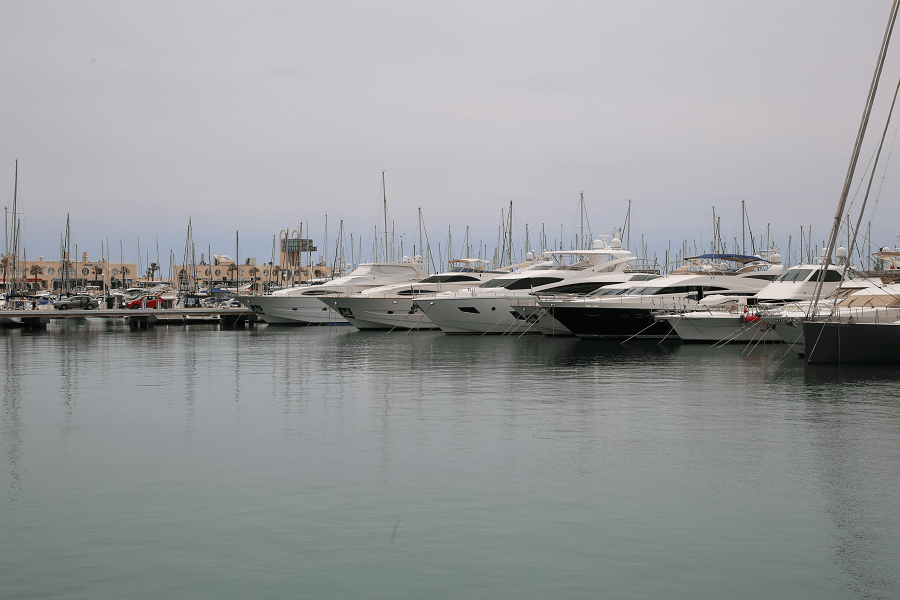
The museum occupies 1,300 square meters of the Old Oran Maritime Station, in the Port of Alicante. It has two floors: on the ground floor is the exhibition space and the museum library; the second floor has a multipurpose space for workshops and a cafeteria-restaurant with a large terrace and views of the sea.
The Nueva Tabarca Museumis located on the island of Tabarca, in the municipality of Alicante. It was inaugurated in 2004 in the old Almadraba building, a warehouse used mainly for tuna fishing. The museum focuses on the study and dissemination of the relationships that coastal populations have established.
Theater
The Principal Theater is the most important theater building in Alicante. It is located in the Ruperto Chapí square. The building project was carried out by the Alicante architect Emilio Jover Perrón in a neoclassical style. On February 28, 1939, during the Civil War, it was partially destroyed by a bombardment, so it had to be restored between 1939 and 1941 by the architect Juan Vidal Ramos. Subsequently, from 1985 to 1992, it was renovated, its stage was enlarged.
Festivals
The Bonfires of Saint John. This is a traditional and popular festival celebrated throughout Spain in early summer. It takes place on the evening of June 23rd, on the eve of St. John. This is the most important festival in the city.
Shopping
There is a traditional shopping area in the center of Alicante – it is located in the triangle formed by the Rambla de Méndez Núñez, Avenida de Alfonso X El Sabio and Avenida de Maisonnave where you can find both small shops and large chains of national and international brands. You can also find five shopping centers in the city: Puerta de Alicante, Gran Vía, Plaza Mar, Vistahermosa and Panoramis. In the Playa de San Juan area there is the Alicante Golf shopping center.
Restaurants
There are 13 Michelin list restaurants in Alicante:
- Baeza & Rufete, Avenida de Ansaldo 31, 35 – 65 EUR • Modern Cuisine (One star)
- Monastrell, Avenida del Almirante Julio Guillén Tato 1, 75 – 115 EUR • Modern Cuisine (One star)
- Pópuli Bistró, Vial Flora de España 36, 35 – 55 EUR • Mediterranean Cuisine
- Maestral, Andalucía 18, 35 – 50 EUR • Traditional Cuisine
- Govana, Plaza Doctor Gómez Ulla 4, 34 – 50 EUR • Traditional Cuisine
- La Ereta, Parque de la Ereta, 49 – 69 EUR • Creative
- Open, Manuel Antón 12, 35 – 50 EUR • Modern Cuisine
- Celeste y Don Carlos, General Primo de Rivera 12, 30 – 200 EUR • Modern Cuisine
- La Taberna del Gourmet, San Fernando 10, Regional Cuisine
- Nou Manolín, Villegas 3, 35 – 55 EUR • Regional Cuisine
- El Portal, Bilbao 2, 30 – 70 EUR • Modern Cuisine
- Terre, Explanada de España 11, Traditional Cuisine
- Piripi, Oscar Esplá 30, 40 – 60 EUR • Regional Cuisine
Beaches
Alicante has a large number of beaches which constitutes a major tourist attraction. Year after year these beaches are awarded the Blue Flag recognition by the European Union, giving them the international prestige.
The best beaches of the Mediterranean coast are: San Juan beach, Cabo de la Huerta creeks, Almadraba beach, La Albufereta beach, Postiguet beach, Saladares-Urbanova beach, Tabarca island.
Since June 2016, Aguamarga beach (adapted for dogs) has been opened.
Transport
Alicante–Elche Miguel Hernández Airport, commonly known as Alicante–Elche Airport or simply Alicante Airport and originally named El Altet, is —as of 2020— the fifth-busiest airport in Spain based on passenger numbers, and the main airport serving the Valencian Community and the Region of Murcia. The airport is located in the municipality of Elche, about 10 kilometres east of this city and about 9 km southwest of Alicante.
Its influence area spans other cities in the Valencia province—the city of Valencia is located about 160 km north of the airport—and in the Region of Murcia. The airport is located about 70 km north of Murcia city.
Alicante railway station is used by Cercanías Murcia/Alicante commuter rail services linking Alicante with suburbs and Murcia. Long-range Renfe trains run frequently to Madrid, Barcelona, and Valencia. In 2013, the Madrid–Levante high-speed rail network was extended to Alicante station, allowing AVE high-speed rail services to link to Madrid via Villena AV, Albacete – Los Llanos and Cuenca-Fernando Zóbel.
Alicante Tram connects the city with outlying settlements along Costa Blanca. As of 2020, electric tram-trains run up to Benidorm, and diesel trains go further to Dénia.
By car:
From Valencia 1 hr 58 min (170 km) via A-7
From Madrid 4 hr 5 min (426 km) via AP-36 and A-31
Main information
Area: 201 sq. km
GPS coordinates: 38°20′43″N 0°28′59″W
Language: Spanish, Valencian
Population: 337 500
Currency: Euro
Visa: Schengen
Time: Central European UTC +1, in summer +2
See here best sea and ocean resorts of France and Spain (223 objects)




